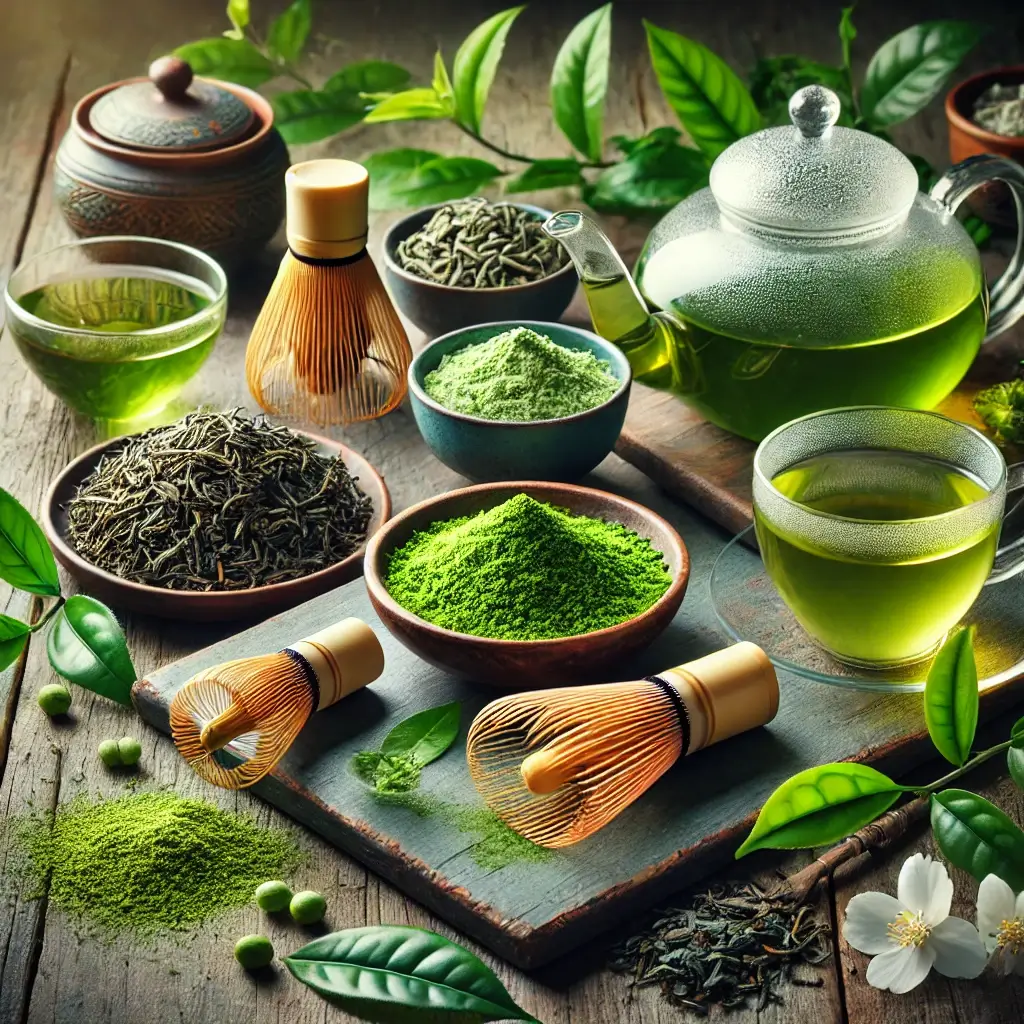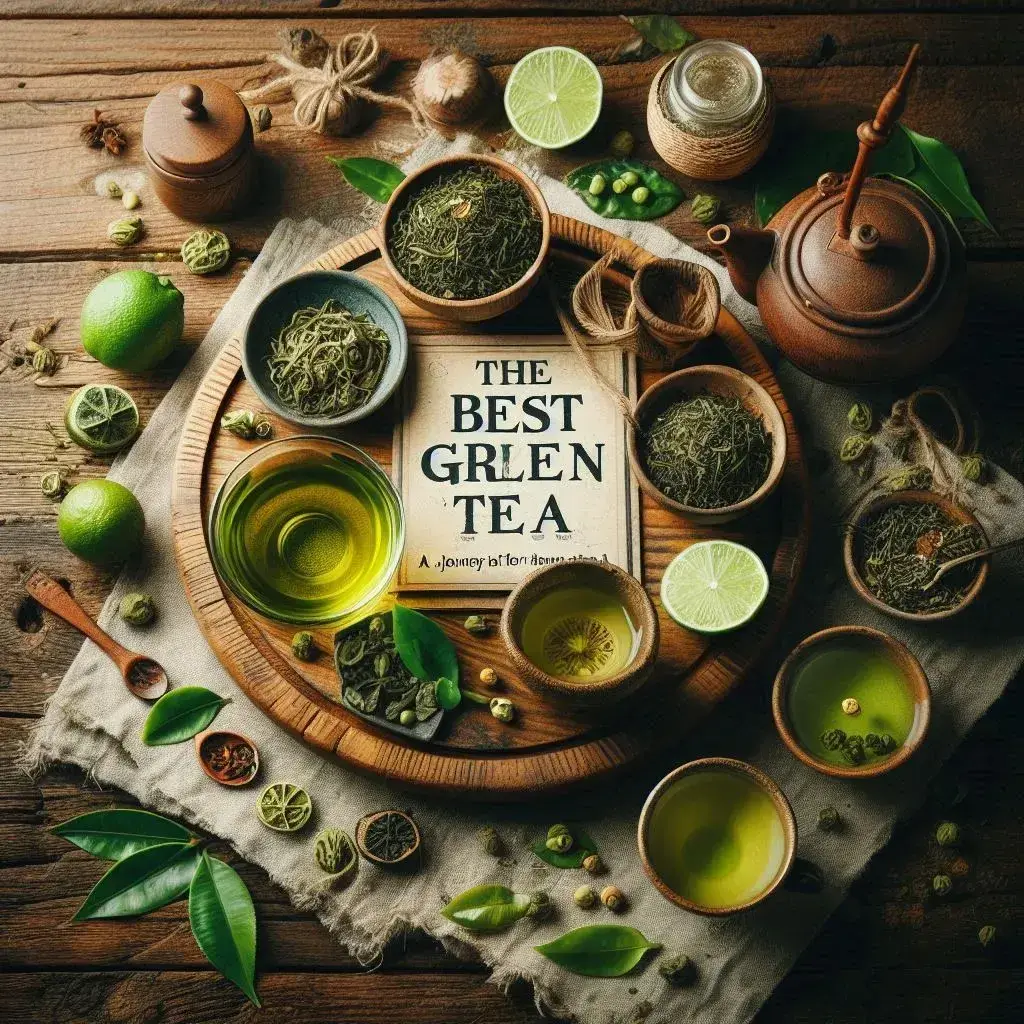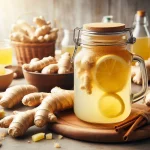- 100 Best Gifts for New Moms 2025 Ultimate Guide - 07/30/2025
- 100 Best Personalized Gifts 2025 Ultimate Guide - 07/29/2025
- 100 Best Anniversary Gifts 2025 Ultimate Guide - 07/28/2025

Table of Contents
The Best Green Tea: A Journey into Flavor and Health
Green tea has been cherished for centuries, not just for its soothing flavor but also for its numerous health benefits. Whether you’re a tea connoisseur or a casual sipper, finding the best green tea can elevate your daily routine. Let’s explore what makes a green tea truly exceptional, the different types available, and how to choose the best one for your needs.
The Essence of Green Tea
Green tea is derived from the leaves of the Camellia sinensis plant, which is also the source of black and oolong teas. However, what sets green tea apart is the minimal oxidation process it undergoes. The leaves are quickly steamed or pan-fired to prevent oxidation, preserving their vibrant green color and delicate flavors. This process also ensures that green tea retains its high levels of antioxidants, particularly catechins, which are responsible for many of its health benefits.
Health Benefits of Green Tea
One of the primary reasons people seek out the best green tea is its health benefits. Green tea is rich in antioxidants, which help combat free radicals in the body. These antioxidants, particularly EGCG (epigallocatechin gallate), have been linked to numerous health benefits, including:
- Weight Loss: Green tea can boost metabolism and increase fat burning, making it a popular choice for those looking to lose weight.
- Heart Health: Regular consumption of green tea has been shown to lower LDL cholesterol levels and reduce the risk of heart disease.
- Brain Function: The caffeine and L-theanine in green tea work together to improve brain function, enhancing memory, focus, and alertness.
- Cancer Prevention: Some studies suggest that the antioxidants in green tea may help reduce the risk of certain types of cancer, including breast, prostate, and colorectal cancers.
- Anti-Aging: The antioxidants in green tea also contribute to slowing down the aging process, keeping your skin looking youthful and radiant.
Types of Green Tea
Green tea comes in various forms, each with its own unique flavor profile and preparation method. Here are some of the most popular types:
- Sencha: The most common type of green tea in Japan, Sencha is known for its grassy, slightly sweet flavor. It’s a great everyday tea that can be enjoyed hot or cold.
- Matcha: This powdered green tea is made from shade-grown leaves that are stone-ground into a fine powder. Matcha is known for its vibrant green color and intense, earthy flavor. It’s often used in traditional Japanese tea ceremonies and is also popular in lattes and desserts.
- Gyokuro: A premium Japanese green tea, Gyokuro is shade-grown like matcha, which gives it a rich, umami flavor and a higher concentration of chlorophyll and amino acids.
- Dragon Well (Longjing): A famous Chinese green tea, Dragon Well is known for its flat, jade-green leaves and a smooth, sweet taste with hints of chestnut. It’s considered one of the finest green teas in China.
- Jasmine Green Tea: This is a scented green tea, where the leaves are infused with jasmine flowers to create a fragrant and floral tea. It’s a popular choice for those who enjoy a more aromatic cup.
How to Choose the Best Green Tea
When searching for the best green tea, consider the following factors:
- Origin: The origin of the tea plays a significant role in its flavor profile. Japanese green teas tend to be more grassy and vegetal, while Chinese green teas are often more mellow and nutty.
- Freshness: Green tea is best enjoyed fresh, as it can lose its flavor and health benefits over time. Look for teas that are harvested and packed recently, and store them in a cool, dark place to maintain their quality.
- Quality: The quality of the leaves is crucial. Look for whole, unbroken leaves that are vibrant in color. Avoid teas with a lot of dust or broken leaves, as these are often lower in quality.
- Taste Preference: Green tea can range from sweet and delicate to bold and vegetal. Experiment with different types to find the one that suits your palate.
- Preparation: The best green tea is often the one that’s prepared correctly. Use fresh, filtered water and steep the tea at the right temperature (usually around 160-180°F) for the recommended time. Over-steeping can result in a bitter taste, so be mindful of the brewing process.

Conclusion
Finding the best green tea is a personal journey that involves exploring different types, flavors, and preparation methods. Whether you’re drawn to the grassy notes of Sencha, the rich umami of Gyokuro, or the aromatic charm of Jasmine tea, there’s a green tea out there that’s perfect for you. With its health benefits and diverse flavor profiles, green tea is not just a beverage; it’s a lifestyle choice that can enhance both your well-being and your appreciation for the finer things in life.
Best Indian Yogurt Drink(3 Types)
- SpongeBob Party Drink: 2025 In-Depth Guide
- 100 Unique Drink Ideas: A Comprehensive Guide 2025
- How to Make Ginger Beer(6 Steps Funny style)
- Best Ginger Beer(6 Best Choices)
- Fever Tree Ginger Beer Review(Funny Style)
- Ginger Beer vs Ginger Ale(1 In-Depth Guide)
- Best Beer in the World(Legendary Status)
- Corona Non-Alcoholic Beer Review(Funny style)
- Heineken 0.0: The Beer That Won’t Call You at 3 AM
- Best Non-Alcoholic Beer(6 Best Choices)
- How to Make Root Beer at Home: A Simple Guide
- How to Make a Root Beer Float(1 Perfect Guide)
- Best Spongebob Party Drink(2 Perfect Options)
- Best Spongebob Alcohol Drink: Pineapple Punch
- SpongeBob Party Drink: Creative In-Depth 2025
- Creative SpongeBob Party Drink(Dive into the Fun)
🎯 Don’t Miss Out — These Are Reader-Favorite Bestsellers You’ll Love Too 👇
| # | 🎁 Product | 💬 Why It Converts | 🔗 Quick Action |
|---|---|---|---|
| ✅ 1 | Exploding KittensThe Wildly Popular Card Game | 🔥 100,000+ rave reviews🤣 Fun for all ages🎉 #1 party game choice | 👉 Click to Check Price |
| 😂 2 | Funny Dad T-Shirt“You Can’t Scare Me, I Have Kids” | 👕 Viral dad gift🎂 Perfect for birthdays & Father’s Day💬 Gets people laughing instantly | 👉 See It in Action |
| 🕯️ 3 | Luxury Candle Gift SetElegant 1-Wick, Spa Fragrance | 🧘♀️ Instant relaxation🎁 Beautifully boxed for gifting💡 Affordable luxury | 👉 Treat Yourself or Gift Now |
| 🔍 4 | Tile Bluetooth TrackerFind Anything in Seconds | 🛠️ Life-saving tech🧓 Great for parents, teens, travelers📱 Works with your phone | 👉 Never Lose Anything Again |
| 📘 5 | Atomic Habits by James ClearTransform Your Daily Life | 📖 20M+ readers worldwide🔑 Simple steps, big results🎓 Top self-growth book | 👉 Read What Everyone’s Talking About |
✅ Why These Items Sell:
| 💡 Trigger | Example in Table | How It Helps Conversion |
|---|---|---|
| ✅ Social Proof | “100,000+ rave reviews” | Builds trust instantly |
| 🎯 Use Case Clarity | “Great for family game night” | Reduces decision friction |
| 🚀 Action Verbs | “Click to check price” | Encourages immediate action |
| 🔥 Urgency & Emotion | “Don’t miss out” / “Treat yourself” | Triggers impulse buying |
| 🎁 Gifting Potential | “Perfect for birthdays & holidays” | Taps into universal purchase intent |
❤️ Your Click Makes a Difference
Every purchase made through these links helps support this site and keeps great content coming — Thanks!
💬 Why Tip? It’s Not Just Money — It’s Motivation ❤️
| 😊 What You Got | 🎁 What I Get | 🔗 What You Can Do |
|---|---|---|
| ✔️ A smile or laugh | ✔️ A reason to keep creating | 👉 Buy me a coffee ☕️ |
| ✔️ Useful tips, insights, or ideas | ✔️ Proof that this content helps | 👉 Click the support button 💸 |
| ✔️ Fun, relatable content | ✔️ Motivation to go deeper & better | 👉 Leave a tip + kind feedback 🙌 |
| ✔️ Ad-free reading experience | ✔️ A little financial breathing room | 👉 $1 isn’t too little, $10 isn’t too much 🎉 |
| ✔️ A sense of connection | ✔️ The joy of being seen and supported | 👉 Let me know you’re out there 👀 |
❤️ If you made it this far, maybe that’s your sign to support? Every tip matters!

















